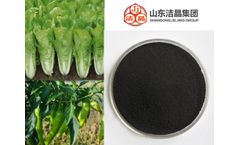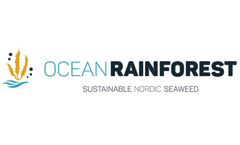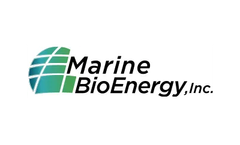Seaweed Extract Uses In Agriculture Articles & Analysis: Older
10 articles found
Fish Farming Ponds: Constructing large fish farming ponds for raising various species of fish, such as tilapia, salmon, catfish, or shrimp. Shellfish Farms: Establishing oyster or mussel farms using suitable infrastructure like floating cages or racks in coastal areas. Offshore Cage Farms: Creating net-cage systems in open water to cultivate fish like salmon or tuna. Aquaponics Systems: ...
The abundant marine biological resources are a material treasure house for the development of ecological agriculture. Seaweed extracts is one of the algae products from marine biological resources. It refers to seaweed extract powder/flakes, alginate oligosaccharide, seaweed ...
A feasibility study on Blue Fashion using cultivated seaweed for textile production The goal is to study the feasibility of “Blue Fashion” using seaweed cultivated and harvested in the North Atlantic and process it into seaweed fibres, that can be used in knitted and woven fabric. The study will focus on four specific objectives: Identify and describe the functionalities of using ...
The MAB4 project focus on cultivating seaweed on a large scale and using it for food and skin products. While running out of farmland, new opportunities show up for growing sea-crops in the oceans. Many seaweed species are highly nutritious and rich in bioactive substances, those can serve as ingredients for food and cosmetics. In Far East, longlines of seaweed – also known as ...
In response to a call for proposals by the Advanced Research Projects Agency - Energy (ARPA-E) MARINER program through the U.S. Department of Energy, an international research team under the project name of MacroSystems, primed by Ocean Rainforest, Inc., has been asked to demonstrate the economic and social opportunities of offshore cultivation of seaweeds, specifically a species named ...
One day in the future, the Pacific Ocean could be home to kilometers of seaweed farms tended by submarine drones and waiting to be turned into fuel. This is the vision of Marine BioEnergy, a start-up backed by the Advanced Research Projects Agency–Energy (ARPA-E). The U.S. government agency is funding the company, along with a handful of related projects, because it views the open ocean as ...
Off the coast of California, the idea is that someday tiny robot submarines will drag kelp deep into the ocean at night, to soak up nutrients, then bring the plants back to the surface during the day, to bask in the sunlight. The goal of this offbeat project? To see if it’s possible to farm vast quantities of seaweed in the open ocean for a new type of carbon-neutral biofuel that might ...
Farming fish together with seaweed and other species could help improve the sustainability of aquaculture and reduce pollution. A new study provides a tool for designing sustainable fish farming systems and calculates their potential to recycle waste. An example of a salmon farming system incorporating seaweed and sea urchins could reduce nitrogen releases to the environment by 45%. Over half of ...
Self-sufficient nation states in the middle of the ocean might be our ticket to a sustainable future. Oceans cover 71 percent of Earth’s surface, yet provide less than 2 percent of the food we eat. The growing demand for seafood, however — predicted to rise to 8 percent during the next decade — from an already depleted and exhausted ocean is forcing agriculturalists and fishers ...
ByEnsia
Production of seaweeds in Chile has fluctuated between 120,000 and 316,000 wet metric tons per year during the last ten years. The most important Phaeophyta are exploited for alginate production and as abalone feed. Among the Rhodophyta, Chilean production comes mainly from wild stocks, as at present cultivation on a commercial scale is restricted to Gracilaria. Large scale production of this ...







